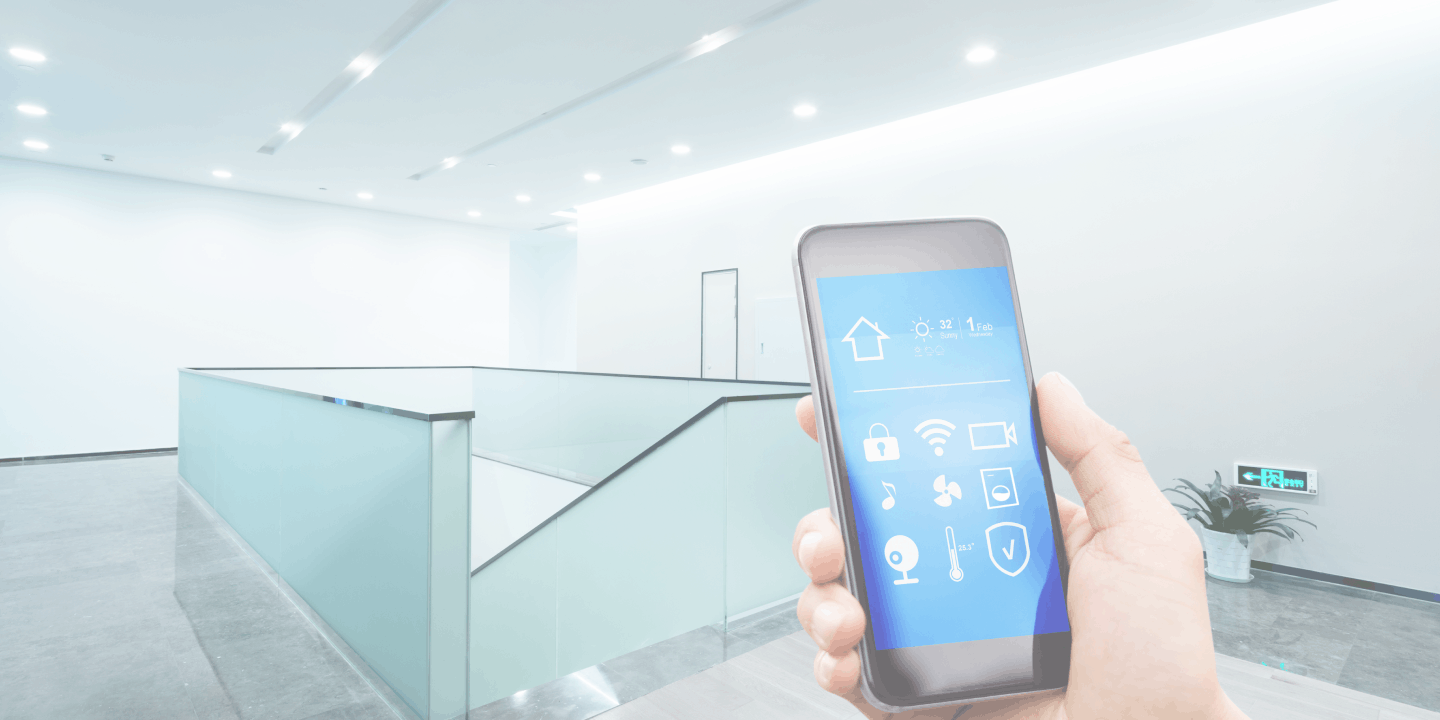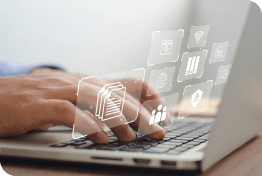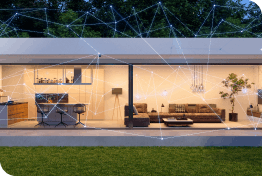
- Smart Alarm Management
Digitalization of alarm management, what does it mean?
Digitalization – what it is and what it's not.
Digitalization has many faces, but in any case, it means transformation. It's how analog content or processes get translated into a digital form. So, in simplified terms, digitalization means moving from analog to digital.
The advent of digital technologies has fundamentally changed communication between humans, devices, and how both interact, which now requires new technological structures. Although it seems legit to equate digitalization with technology, there's more than the technical aspect of digital transformation. The other part of digitalization that often goes unnoticed is communication. Experts like the Zukunftsinstitut, which has played a vital role in shaping trends and future research and is today a leading international contact for questions concerning the development of the economy and society, claim that we need to understand digitalization more comprehensively: As technologically interconnected communication.
Digitalization – a megatrend?
This new way of communicating characterizes the trend of digitalization. However, following the megatrend-categorization of the Zukunftsinstitut, digitalization is just a sub-trend to a much bigger umbrella trend: Connectivity. This needs for networking and feeling connected based on digital infrastructures is what dominates and drives social change. Megatrends are like "avalanches in slow motion". They can't be stopped and slowly but fundamentally impose a severe shift globally on all levels of society.
What drives digitalization?
Digitalization is not solely "(…) a technical evolution but rather an industrial and social revolution driven by citizens and customers" (Hans Gillior, Institute for Digital Transformation). The change in people's behavior, attitudes, and expectations accompanying this revolution has been noticeable: Customers increasingly expect products and services to be delivered seamlessly digitally. A few decades ago, what is considered a luxury became a common standard.
Apart from the pressure to embrace digitalization that originates from the customer side, the increasing pace of exponential technological progress, constant advancements on the internet, mobile applications, and globalization are forcing businesses to change fundamentally. Technology trends that arise from digitalization include but are not limited to, the Internet of Things (IoT), AI (Artificial Intelligence), AR (Augmented Reality), and data analytics under Big Data.
Digitalization and cloud-based services and processes are consistently highlighted as the critical business drivers of the 21st century, regardless of industry. Given its characteristics and impacts, digitalization is no longer a choice but an imperative for business leaders.
Digitalization in the security industry
Digitalization is not stopping at the security industry either. On the contrary, a tremendous digital disruption is going on right now, trying to shift security leaders' mindsets and traditionally led operations from holding onto the status quo to embracing digital transformation. Security leaders must adopt a digital mindset and start challenging conventional thinking to avoid missing out on various opportunities to improve life safety and create value beyond traditional alarm management. Otherwise, they run the risk of becoming business irrelevant.
Still: Compared to other industries, the digital transformation of physical security is only just beginning. And many organizations are still trying to resist digitization in various ways, with the illusion that it is possible to evade it.
The threat landscape is changing as well
Digitalization has created not only opportunities and advancements for businesses but equally for criminals. And today, every business can be a target. How can you ensure valuables and lives are safe while running your security operations the conventional way?
Technological advancements like cloud computing and AI blur the lines between the physical and digital worlds. As a result, digitalization has unwittingly created new threats in all the positives it has brought. This raises the need for new ways of dealing with security risk and threat detection management: We need intelligent systems that can handle overwhelming amounts of data so that humans can focus on their core business and run more efficiently.
How is digitalization impacting alarm management?
Traditionally, in alarm management, every incoming alarm needs to be processed manually by an operator in the control center. As the number of alarms increases, it becomes more and more of a challenge for the operator to understand what's going on, give attention to the real alarms only, and disregard false alarms. Modern alarm management platforms like evalink offer smart alarm filtering based on connecting operations with automation technology which helps operations teams stay focused on priorities.
By leveraging technology that generates greater intelligence, alarm management will do more with less. The improved efficiency and reduced operating and capital costs open new growth prospects for businesses: The exact same number of staff can now secure more objects in the control center.
What's the value of the digitalization of alarm management?
Adopting an alarm management platform based on a cloud architecture has many competitive advantages.
As data is stored in the cloud, an internet connection is required to access information. Since everyone accesses data from home, on the go, and everywhere globally, there is a significant amount of freedom, adding great flexibility to daily work practices.
To guarantee the highest availability of all offered services, cloud-based alarm management platforms like evalink run on microservices. Designed redundantly and backed up by a multi-regional setting and multiple data centers, it provides reliability, ensures business continuity and improved disaster recovery, and minimizes the risk of facing any downtime or productivity losses.
To continually adapt to a company's situation, cloud solutions like evalink are scalable. They allow operations and storage requirements to scale up or down without capacity constraints as workloads change. That way, businesses can grow expendable and still be able to manage alarms the same way, which is a direct competitive advantage to gain shares in a tight market.
Moving businesses to the cloud may reduce the cost of maintaining or upgrading IT systems the conventional way: Buying new models relying on legacy infrastructures. Using a cloud-based model for alarm management instead can be more cost-effective. How? Translating the investment expenditure for new equipment or external hosting into operational spending only. Many cloud solutions offer one-time-payment or pay-as-you-go models so that IT costs can be lowered to a significant amount - like the evalink alarm management platform.
Those are only some benefits of digitalizing alarm management alongside other company infrastructure modernizations. We recommend looking for a reliable, agile, and certified solution to ensure a successful and future-proof migration project.
Digitalization is direct access to any applications
New digital possibilities on the market, such as cloud-based and interconnected alarm management solutions, guarantee highly flexible access to applications. As customers now expect an integrated approach to services, a successful digital solution today requires the smooth interaction of many systems.
The evalink marketplace is an excellent example: Out of many different integrations to choose from, it offers a convenient way of extending a business's existing security systems with additional services that expand its insight into an on-site situation. These include, for instance, (instant) notifications (Slack), access control (Brivo), or video surveillance tools (Eagle Eye Networks, Milestone) that add camera pictures to an alarm management platform. By enabling the interconnection and communication between systems like alarm panels or receivers based on diverging protocols, integrations like these fill in potential gaps between the products and services.
A collaborative network of partners that backs up a service like evalink adds value to businesses' security operations. Also, it will make the migration to a fully digitalized, automated alarm management solution easy because not everything needs to be changed immediately. Instead, it can seamlessly plug additional features or modules into current processes for a start.
Every journey begins with a first step
As the world is steadily shifting towards a digitalized future, alarm management will eventually also have to move from analog to digital – if it hasn't already. The transformation from reactive to proactive and manual to automated is forging ahead, even if most companies are only beginning their digital journey. The cloud has already replaced many on-premise solutions as the central storage location for internal corporate data and will continue to gain importance. Digital progress opens new paths, and embarking is the only way to ensure the security of assets, people, and objects.
Transforming security operations to fully digital is vital. But security teams must remember that digital transformation is a journey that starts with one step, just like every journey.
And when you see all the possibilities that digitalizing your alarm management system will bring to your business, you're bound to wonder what made you stick to the old plan for so long – we're sure about that.
Ready to take your security business to the next level? Request a demo.



